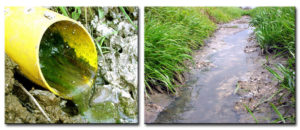 The prevention and treatment of disease in captive reptiles and amphibians has advanced greatly in recent years. Unfortunately, however, there is still a great deal that baffles us — our knowledge of amphibian medicine in particular is quite poor. On the positive side, we do know a quite a bit about the diagnosis and treatment of disease in tropical fishes, and much of the basic research behind this is applicable to amphibians.
The prevention and treatment of disease in captive reptiles and amphibians has advanced greatly in recent years. Unfortunately, however, there is still a great deal that baffles us — our knowledge of amphibian medicine in particular is quite poor. On the positive side, we do know a quite a bit about the diagnosis and treatment of disease in tropical fishes, and much of the basic research behind this is applicable to amphibians.
General Notes Concerning Amphibian Health Care
Among the most important steps you can take to insure the health of your pet amphibians is to establish a relationship with a qualified veterinarian. Veterinary practices specializing in amphibian medicine, although by no means common, are on the increase. Your local herpetological society should be able to provide some leads.
 Many medications designed for use with aquarium fish work well on related conditions in amphibians. Bare in mind, however, that amphibians absorb medication over a much greater area surface area that do fish — in many cases, the entire skin of the amphibian will allow transfer of the medicine. Although I have had success using certain medications in the same dosages as are recommended for fish, I always begin treatment with a 50% dilution and watch carefully for signs of stress (gasping, swimming about wildly, scratching, skin sloughing).
Many medications designed for use with aquarium fish work well on related conditions in amphibians. Bare in mind, however, that amphibians absorb medication over a much greater area surface area that do fish — in many cases, the entire skin of the amphibian will allow transfer of the medicine. Although I have had success using certain medications in the same dosages as are recommended for fish, I always begin treatment with a 50% dilution and watch carefully for signs of stress (gasping, swimming about wildly, scratching, skin sloughing).
Good hygiene is the basic starting point for avoiding sickness, and, in some cases, even for treatment. Again, the porous nature of amphibian skin is a consideration – ammonia from waste products and other toxins in the terrarium will be absorbed through the skin if not removed.
Bottled spring water (not distilled water) should always be on hand. Salamanders and frogs suffering from ammonia or other chemical toxicity can sometimes be revived by placing them in such water and allowing it to flush harmful chemicals from the body.

Considering how little we know concerning the treatment of disease, prevention is vital. Always be sure to keep your pets in a secure, stress-free environment and provide each species with the appropriate temperature, humidity, light cycle and diet.
Amphibian skin is extremely delicate, and its mucous covering repels attacks by harmful microorganisms. Extreme care must be taken in administering injections and in handling frogs and salamanders. Amphibians should be held with wet hands only, or confined within a water-filled plastic bag when being examined. Catching a frog or salamander with a stiff nylon net may also remove some of the skin’s mucous coating and expose the animal to bacterial infection. When in doubt, use a preparation designed to replace the mucus coating of aquarium fish.
Due to the nature of reptile and amphibian circulatory systems, injections of most medications are given in the front legs. If multiple injections are needed, a different leg, and a different site on each leg, should be used. This will go a long way in avoiding damage to the delicate skin.
The details of all the medical treatments administered to your pets should be recorded. Not only will this prevent mistakes, especially when you’re experimenting with different dosage levels, but a record of what you have done will also be very useful to yourself and others in the future, and may even lead to a new discovery. Trust me on this – write it down, you will not remember in years to come!
 That Reptile Blog – Reptile, Amphibian and Exotic Pet Care and Information
That Reptile Blog – Reptile, Amphibian and Exotic Pet Care and Information






